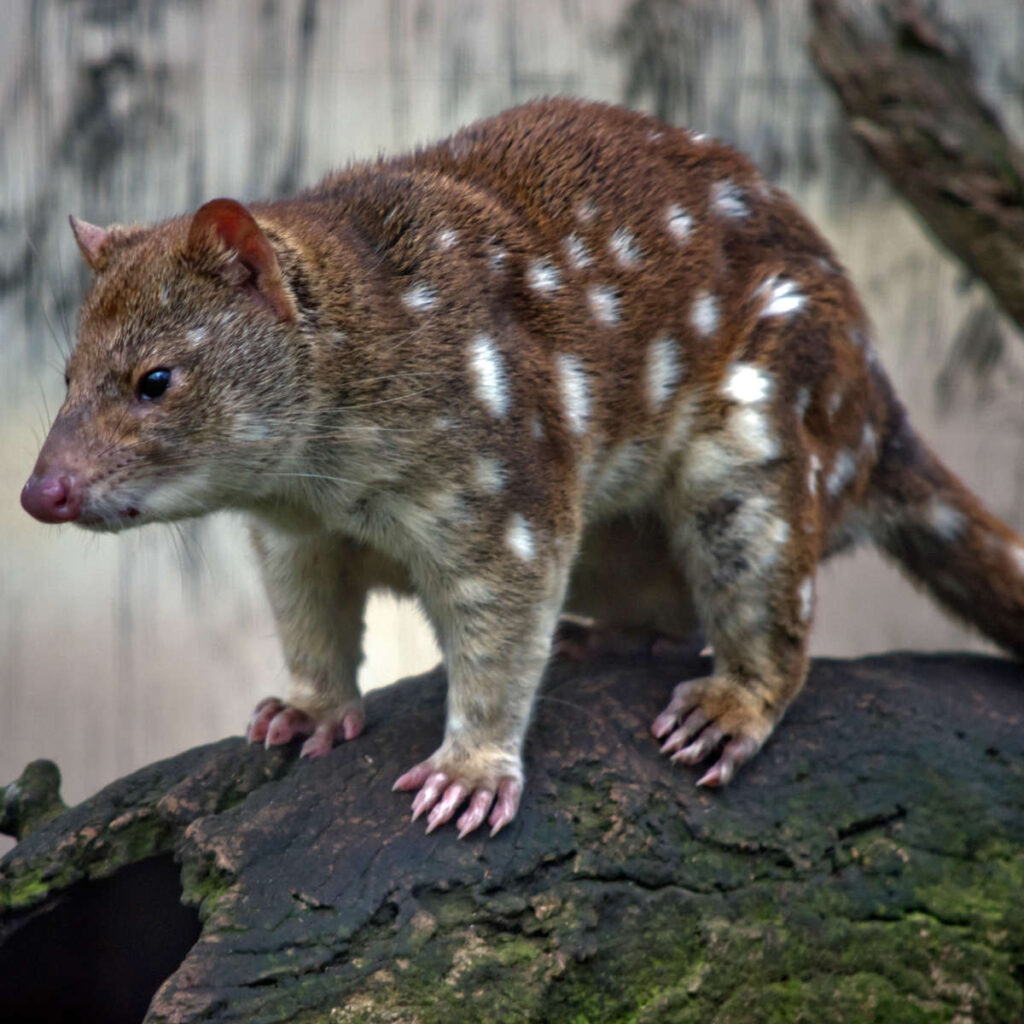Last Reviewed and Updated on November 2, 2022
These adorable carnivores can be found in Australia and New Guinea. You usually won’t spot one during the day as they are most active at night. Read through some of the most interesting facts about quolls, from how they are similar to kangaroos to how these animals are threatened by an unlikely animal; a frog.

1. Quolls are marsupials like kangaroos
Just like the kangaroo, quolls are marsupials. These two animals may not look much alike, but they do have many things in common.
Some other marsupials are opossums, koalas, Tasmanian devils, wombats…
2. During the breeding season, a female develops a pouch
There are six living species of quolls, and in five of the six species, a female will develop a pouch during the breeding season. Once a female becomes pregnant, the folds on her abdomen become a pouch that opens in the back.
One of the six species, the tiger quoll, has a true pouch that is present all the time.
3. When born, the baby quoll is the size of a grain of rice
Once born, the baby will move to the pouch, where it will continue to develop for eight more weeks.
Up to 18 quolls are born each season, with only six surviving as a female has only 6 teats.
4. Once baby quolls leave the pouch, they stay on their mother’s backs
After baby quolls spend their eight weeks in the pouch, they emerge and move to the mother’s back. They remain on the mother’s back for six weeks.
5. Northern quolls are threatened by the cane toad
One of the most interesting facts about quolls is that one of the greatest risks to their existence is a toad. And it’s not because the toads would eat them, but because the qolls eat the toads. Cane toads were introduced into Queensland in 1935, and since then, the toad population has grown exponentially. These toads are an invasive species.
The cane toads are poisonous, and a quoll can die after consuming one. Quolls’ diet consists of insects, birds, lizards, fruit, and frogs, so they are very likely to eat a cane toad.
6. Quolls hunt by stalking
They will stalk their prey and, depending on the size of the prey, will leap on it or pounce it.
7. They are adapted for droughts
Quolls can meet all their water needs through food.
8. They spend most of the time on the ground but are great climbers
While they spend most of their time on the ground, they are very adept at climbing. They can easily scale trees and have no problems when it comes to hunting other tree-dwelling creatures.
9. Tiger quolls are the largest, and northern quoll is the smallest species
The tiger quoll male weighs about 15 lb / 7 kg, and the northern quoll male up to 32 oz / 900 g.
10. Quolls have communal toilets
They are solitary animals but have communal toilet areas. These areas serve social functions and for marking their territory. These toilets may have up to 100 droppings in them.
